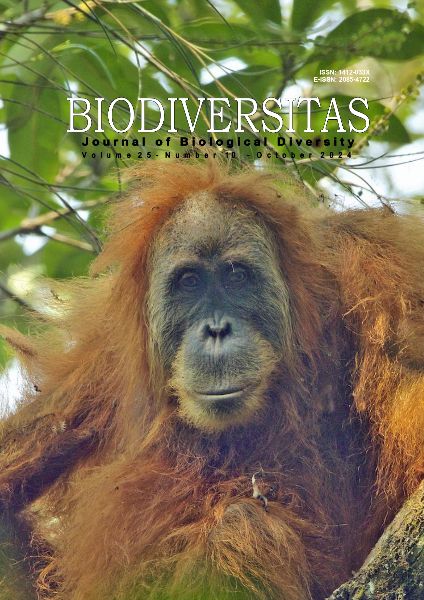Mapping the potential of parasitoid species for biological control of Spodoptera frugiperda in Bali, Indonesia
##plugins.themes.bootstrap3.article.main##
Abstract
Abstract. Ustriyana ING, Supartha IW, Susila IW, Yuliadhi KA, Sudiarta IP, Mokhtar ASB, Jamian SB, Mutiah B, Yasa IWS, Utama IWEK, Yudha IKW. 2024. Mapping the potential of parasitoid species for biological control of Spodoptera frugiperda in Bali, Indonesia. Biodiversitas 25: 3664-3671. Parasitoids are natural enemies that can play a role in controlling the Spodoptera frugiperda (J. E Smith) (Lepidoptera: Noctuideae) pest population. This research aims to determine the morphological and molecular characteristics of these pests as well as distribution patterns in the field. Samples of S. frugiperda eggs and larvae were taken from corn (Zea mays L.) plants from several locations in Bali using the purposive sampling method. Identification of the S. frugiperda parasitoid was carried out using morphological and molecular methods. Based on the morphological and molecular characteristics, the types of S. frugiperda parasitoids in Bali are Telenomus remus as an egg parasitoid and Microplitis prodeniae as a larval parasitoid. The results of molecular analysis of the two types of parasitoids show that T. remus Bali has the same genetic sequence as T. remus from China and the larval parasitoid M. prodeniae Bali has the closest genetic sequence to M. prodeniae China, Hong Kong and India. According to the results of haplotype analysis, it is known that the T. remus parasitoid has one haplotype group with the Chinese T. remus sequence, while M. prodeniae has its own haplotype group when compared with sequences from the same species from several countries. Every sampling location in the Bali cornfield had the distribution of T. remu. Based on the percent parasitism value at each location point, T. remus is a very promising and effective parasitoid as a field mortality factor for S. frugiperda eggs.

